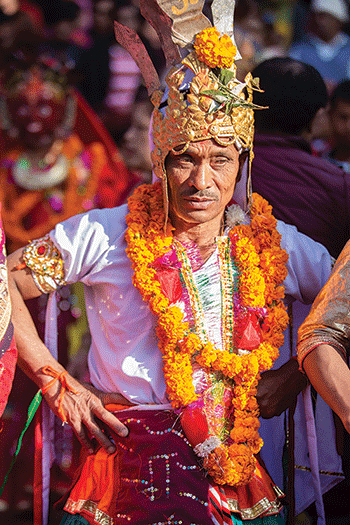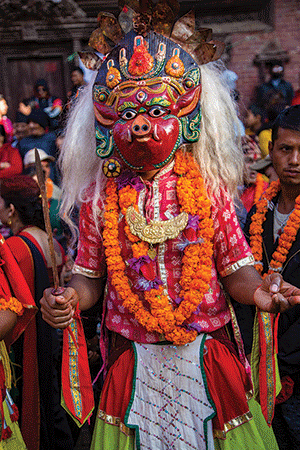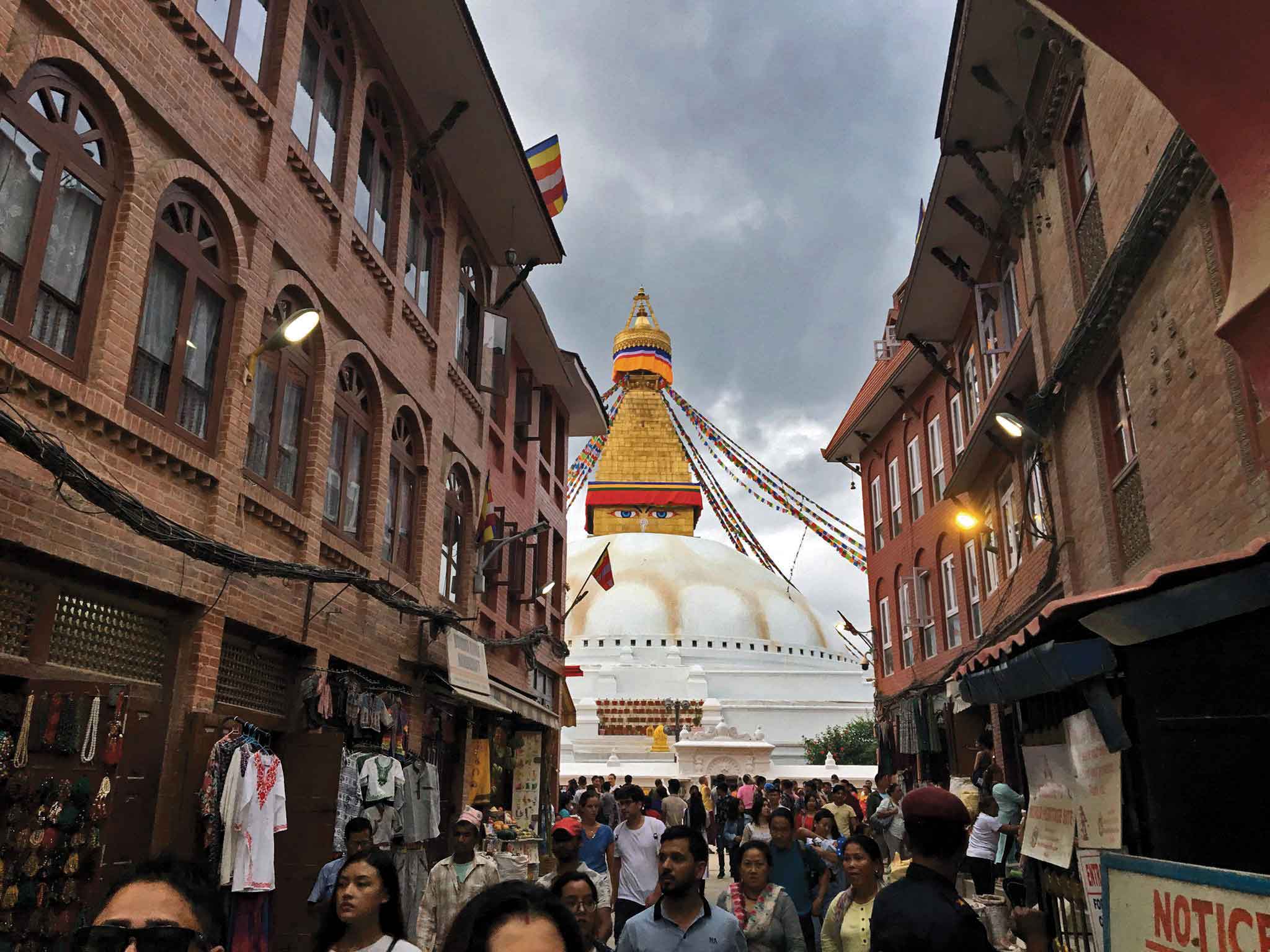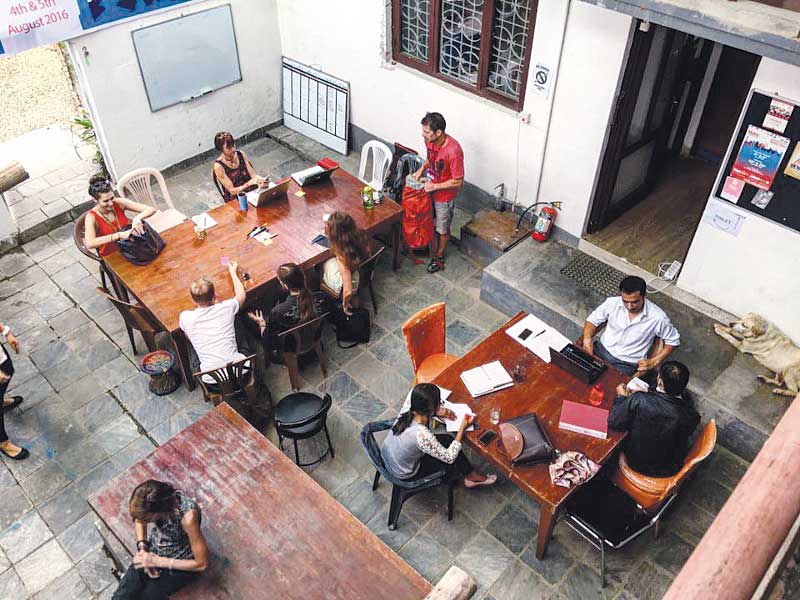The festival had begun when we reached the venue, where a small assembly of fun and curious people were gathered. While some were taking pictures, some, including me, were trying their best to get a glimpse of the jatra by standing on their toes. “Ke jatra ho yo?” (What festival is this?) “Kaile nasuneko yo jatra.” (Never heard of this festival!) were some of the comments people were overheard making. By the end, everyone was fully involved in the merriment, like when the performers started dancing and then began throwing some eggs, causing the audience to start ducking in--case it hit them.
Yes you read that right, eggs! Tistung Jatra was held on November, 30 2019 at Kathmandu Durbar Square, right behind the Bhairav Statue.
Tistung Jatra is also known as Bajrabarahi Nach, (Dance of Bajrabarahi), and is an ancient festival celebrated every 12 years that dates back to before the Licchavi dynasty. It’s so old that it’s difficult to trace down the exact date that it began. Different devi nach or dance of the goddess exist to protect and bless the country. The main goddess that is worshiped in Tistung Jatra is Bajrabarahi along with Indrayani, Ganesh, Bhairab, and the Kumari. It is not an easy jatra to organize; for this Bajrabarahi Nach, training must be given to the participants, and a perfect teacher who can teach the Bajrabarahi dance must be found. It is also believed that if celebrated once every 12 years, an era is changed, and if the dance is performed, then for the next 12 years the country will be safe and free from evil.
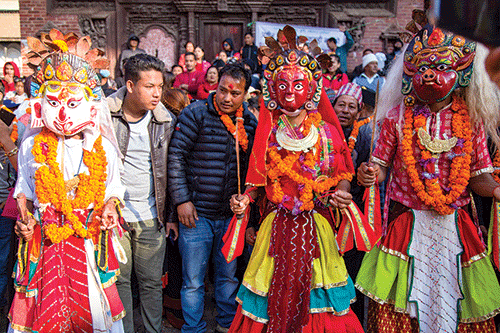
The preparation of this jatra is tough on its participants, too. The performers, who are all male, have to stay in a cave and are restricted from eating certain foods, and told what to do and what not to do, and where not to go. So while practicing and performing, the dancers has to sacrifice time out from their their education and even work, affecting their schedules. During this time they are also taught some mantras which they are not to use except while performing. The dance routine is strictly regimented, too, with all the details being taught to them by the guru. One is chosen when he is devoted and ready to perform.
While Bajrabarahi Nach is the most important festival of Tistung village, it also travels to the neighboring villages of Chitlang, Palung, and so on, finally coming to Kathmandu itself. The actual Bajrabarahi Nach in Tistung takes place over for two nights, while the recent one in Kathmandu was performed for two hours. The festival in Tistung is huge and everyone from children to the elderly assemble to watch the Nach there, even though it might be chilly, it would not matter. It’s a time for merriment, laughter and spending time with each other. Though there is not any special food associated with this festival, but since it’s held during a colder time of year, people tend to drink local beers, meat, and so on. Everyone is welcome to enjoy the festival in Tistung Village, though you will now have to wait 12 years till the next time!
It’s not only a festival for enjoyment and watching the performance and dancing, it is also held to protect its history, so the culture and festival will live on, and also to make people aware of its happening. If we are to protect and be able to pass it to future generations, they will need to be able to understand the festival and continue on with what we do. It’s important for us all to study up and gain and keep this knowledge; protecting old rituals and festivals are what we should be doing—not this one only, but other lesser known ones, too—so that our ancient festivities and ceremonies will never be lost.
And if you’re wondering about those eggs, which, after few minutes of dancing, the performers started throwing in every direction, where they shattered on ground and against the wall, this is what we learned. The dancers hold the eggs in their hands to draw bad spirits, diseases, and evil from the crowds and by throwing them, chase away those bad things collected in the eggs. Now you know, too.


Thoughts on the Meaning of Life from reading Dhruba Bhakta Mathema's biography
Fig 1: Dhruba Bhakta Mathema with his first grandson and family While reading the recently published Life and...


